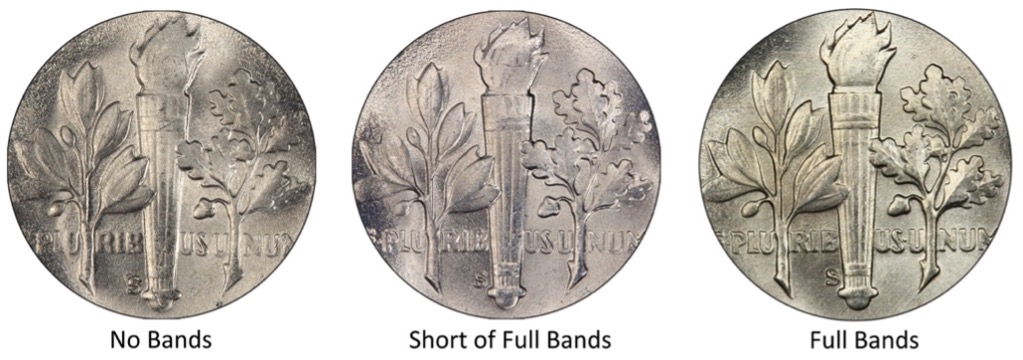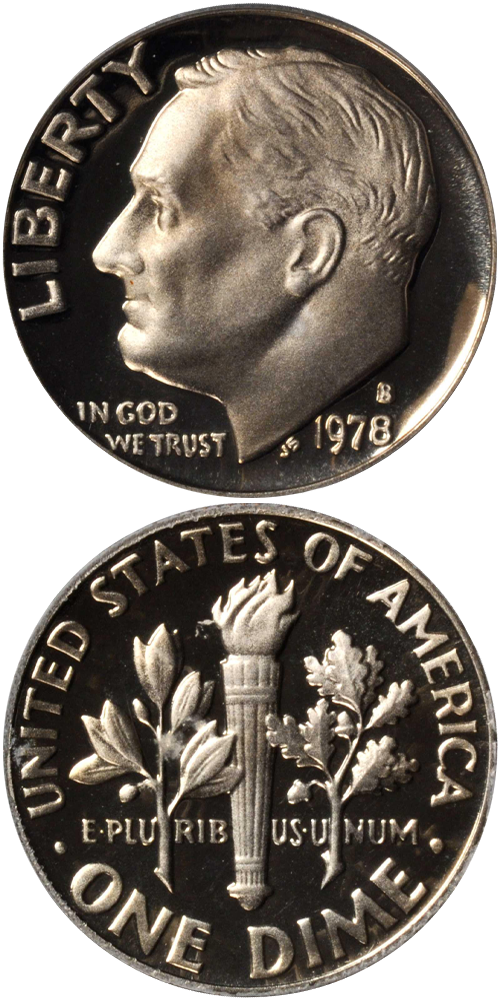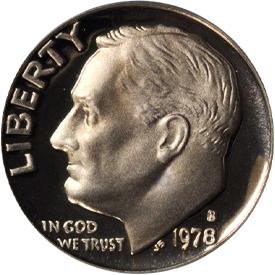Designed by: John R. Sinnock
Issue Dates: 1965 to date
Composition: Pure copper core to which a copper-nickel (75% copper, 25% nickel) is bonded
Diameter: 17.9 mm
Weight: 2.27 grams (35.03 grains)
Edge: Reeded
Proof Mintage: 152,687,998 (Through 2020)
The composition of the dime and quarter were changed in 1965 to a copper-nickel outer layer bonded to a core of pure copper. A coin shortage during this period resulted in a suspension of Proof Coins from 1965 to 1967, and when Proof issues returned in 1968, they were struck at the San Francisco mint which had been idle in the production of coins since 1955. For the most part these 1968 and later Proofs are excessively common even in the highest grades.
Of interest however are four issues that appeared without a mintmark. A few Proof dimes dated 1968, 1970, 1975 and 1983 are known without the “S” mintmark and sell for large premiums. In particular the 1975 “No S” dime is extremely valuable as only two pieces are presently known. The 1968 “No S” is also quite rare with perhaps a couple dozen known. The 1970 and 1983 “No S” dimes are scarce, but not rare. At least several hundred of each are known, and they appear for sale quite regularly. They sell for a healthy premium of course over the regular “S” marked issues but are nowhere near the value of the 1968 or the 1975.
In 1992, the mint began offering Proof dimes, quarters and halves struck in 90% silver in addition to the copper-nickel Proofs. Mintage for the silver proofs generally runs about half that of the copper-nickel proofs. In 2019, the Mint switched to a pure .999 fine silver content for these special Proofs.
It should come as no surprise that certified grades for the ultra-modern Proofs are extremely high and nearly all certified examples grade either PR-69 or PR-70. Few are found lower than PR-68. Cameo and Deep/Ultra Cameo contrast is also the rule, and an overwhelmingly high percentage of these modern Proofs are so-designated.
Full Bands
About 20 years or so ago, some collectors began searching for, and paying a premium price for Roosevelt times with full separation on the bands seen on the torch. In response to this interest, the grading services added the FB (PCGS) or FT (NGC) designation to Roosevelt dimes. Note that both the upper and lower set of bands must show full separation to qualify for the designation.








